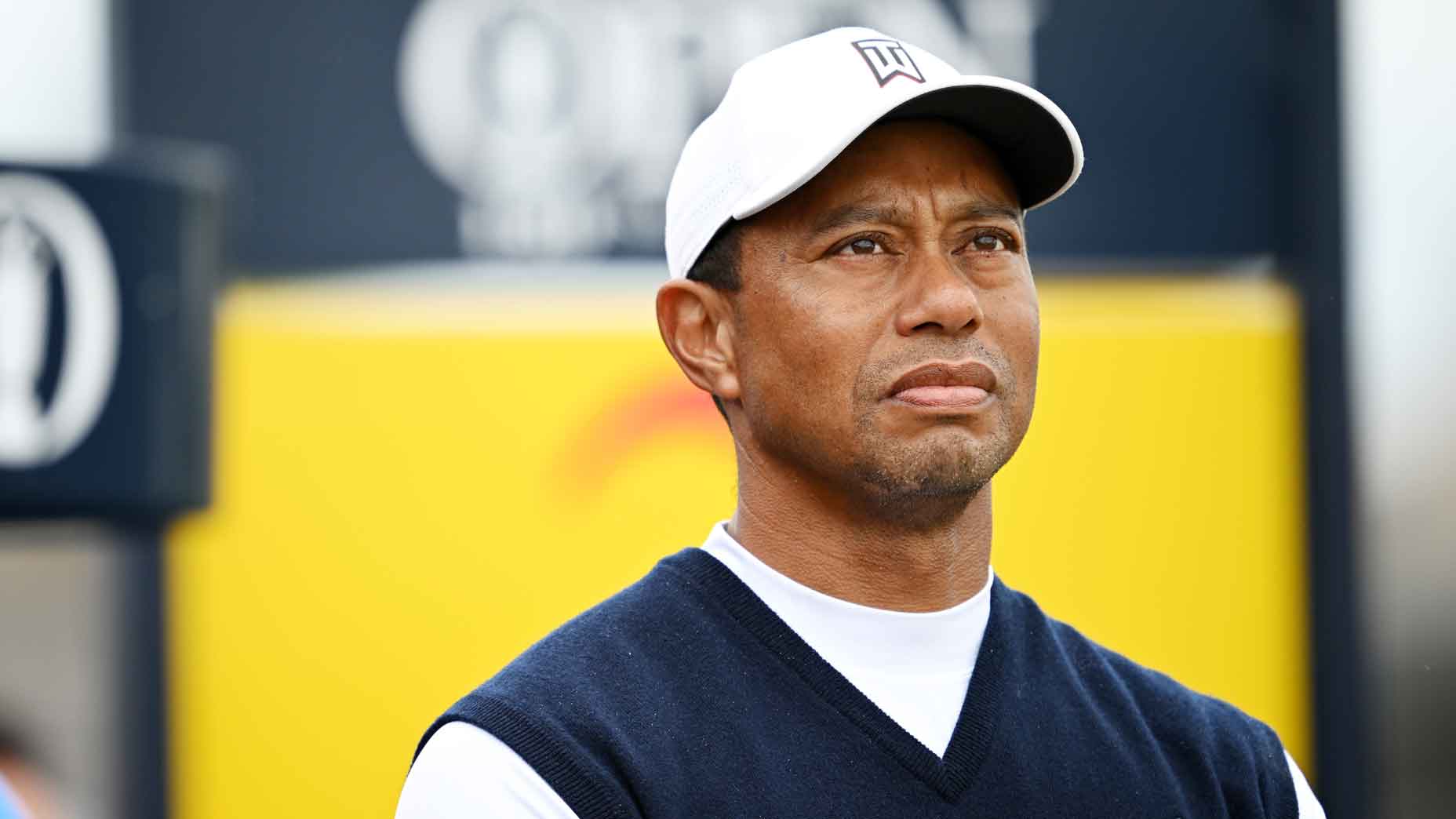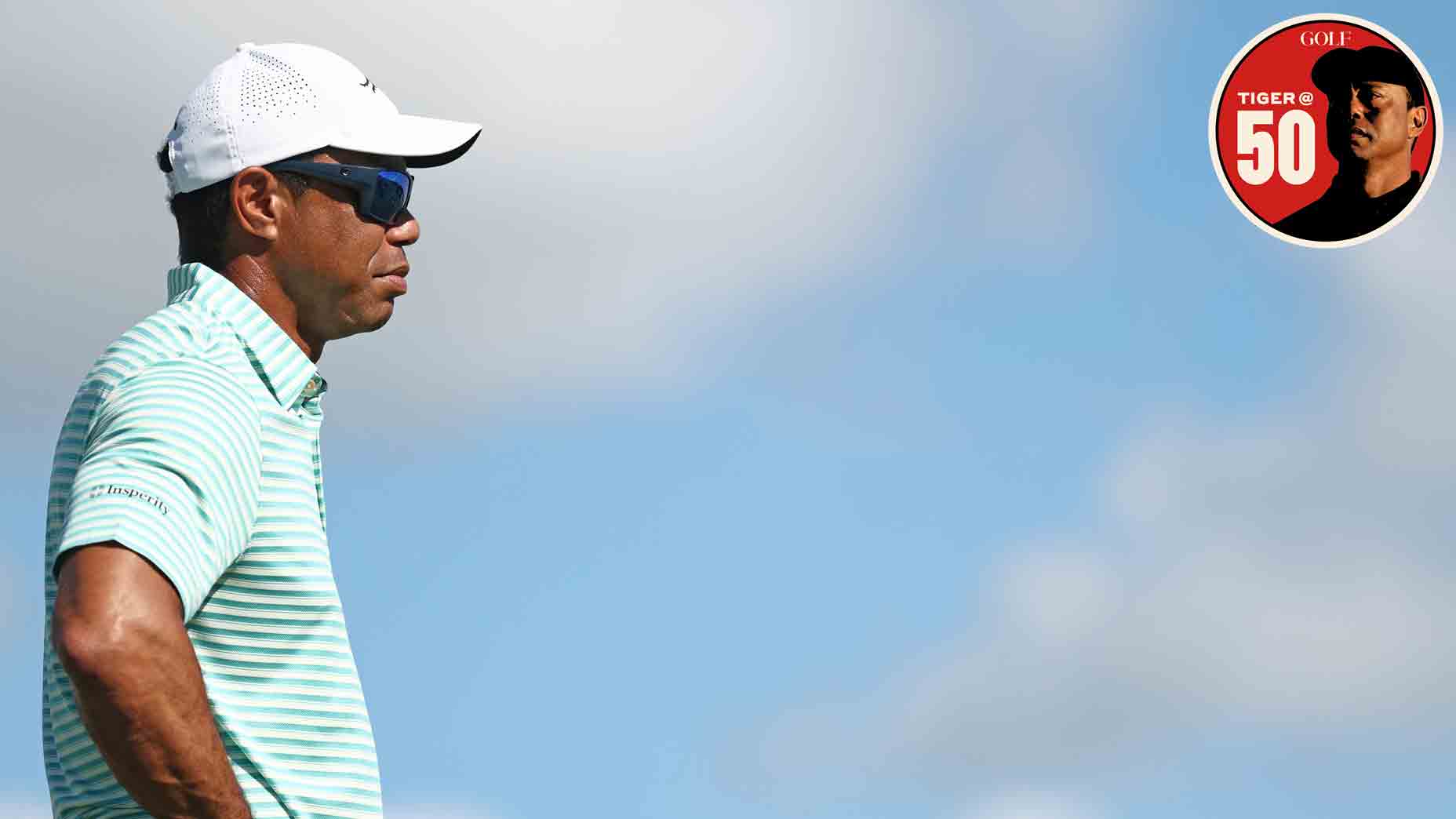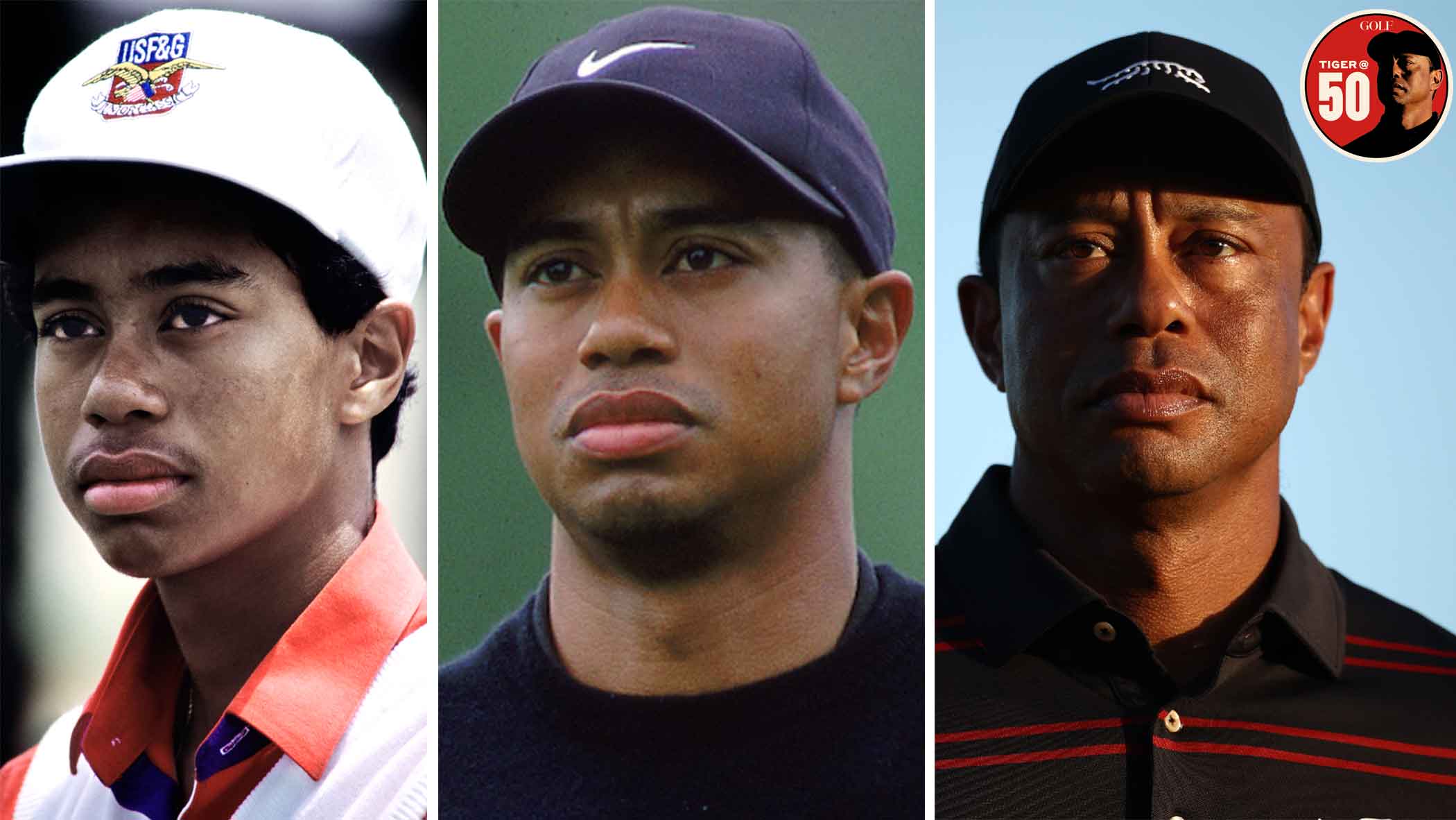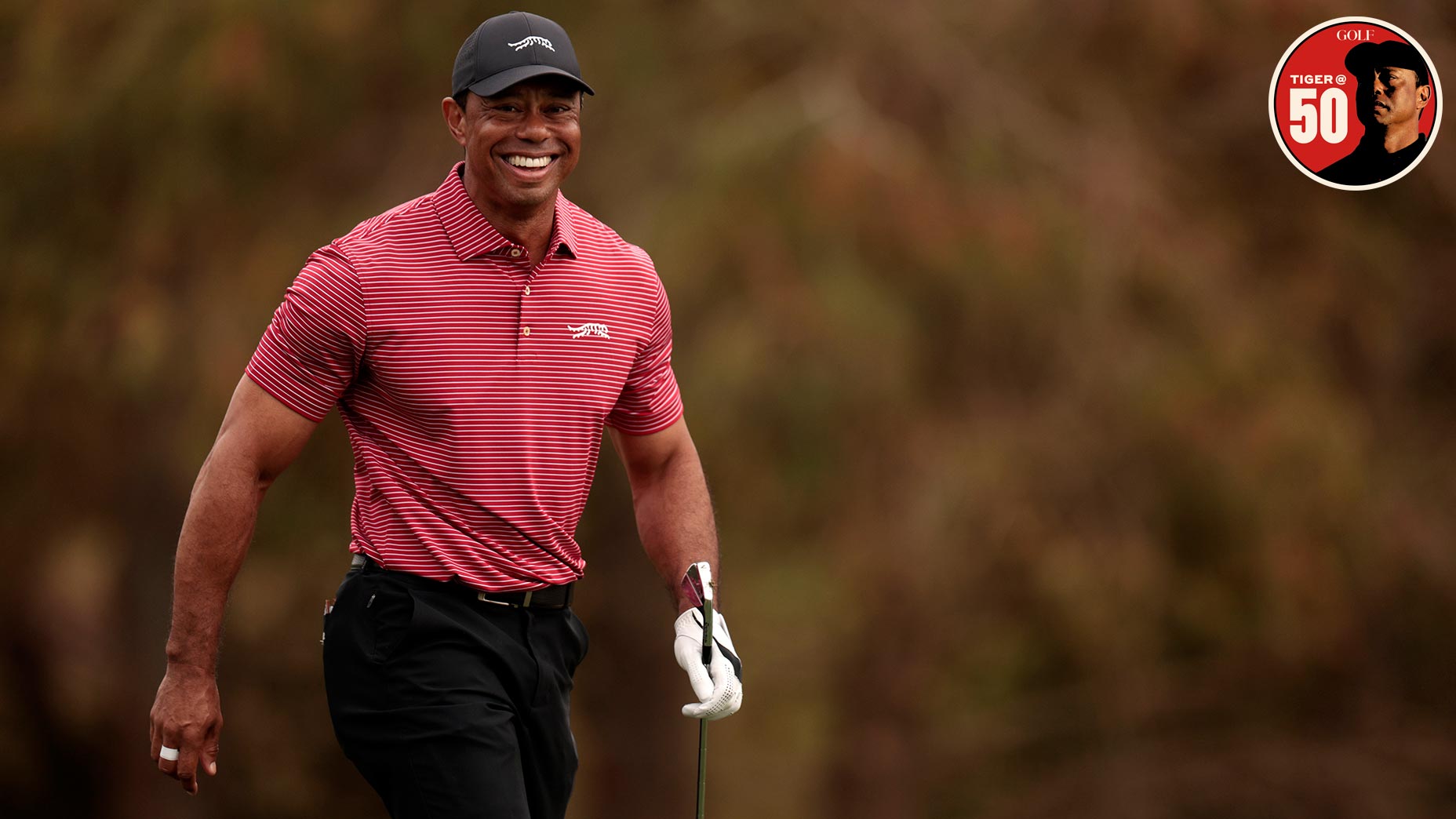We’re not supposed to be talking about the Official World Golf Ranking as much as we are these days. Tiger Woods is not supposed to be asked about it during his first press conference in months. It’s not supposed to inspire hasty notes-app statements from Padraig Harrington. But it’s December in the golf calendar and the OWGR is our topic of choice these days.
The ranking is supposed to be additive to golf culture. It is nothing more than a set of algorithms meant to rank the best players in the world so we can understand them better, so they can make more money, so major championships can have the strongest fields, and so events have another metric by which they can boast (and grow in prominence).
Those purposes are simple, but the ranking itself is not. It is complex, created by statisticians and massaged over the last 40 years to deliver a product with as little bias as possible. And for the record, it is not perfect! It struggled for decades with inherent biases that favored European Tour players, and it recently underwent a significant alteration to remove as much of that as possible, while still maintaining typical golf norms (like the major championships holding more significance than any other events). But as with many complex things these days, anyone seeking to explain them away quickly is doing us all a disservice. See: Jon Rahm calling the OWGR “laughable” and Harrington tapping out 290 words with his thumbs on his iPhone and titling it “A OWGR point missed.”
To help understand the OWGR changes further, I called up Mark Broadie, the statistician, professor and one of the minds behind the new system. If you need to check his bonafides, just know he long poked holes through the old OWGR system, he created Strokes Gained and is the trusted numbers voice for many elite professionals.
1. Harrington’s hypothetical
On Thursday afternoon Harrington’s 198,000 Twitter followers received one giant hypothetical centered around one DP World Tour player. It’s far too focused to represent the grander scope of pro golf at large, but Harrington was happy to elevate the idea as indicative of a trend he’s forecasting.
A point missed with the OWGR. @DPWorldTour @PGATOUR @OWGRltd @VC606 @MarkBroadie @DodoMolinari @gregallenRTE pic.twitter.com/amSsQ15uUT
— Padraig Harrington (@padraig_h) December 1, 2022
As Broadie reminded me, there are thousands and thousands of intersections between the PGA Tour and the DP World Tour. And thousands more intersections between the DP World Tour and the Challenge Tour. And thousands upon thousands more between the PGA Tour and the Korn Ferry, and then the Korn Ferry intersecting with the DP World Tour. Put it all together over the OWGR’s rolling two-year timetable and this is a matrix with more numbers than there are humans on Earth. On 10 Earths. It is not just Player A and Player B and Player C, as Harrington has decided to oversimplify. It’s how Player AYK has played three months ago in the same field as Player BPTW and how Player AAZE fared last week against, say, Rory McIlroy.
We make these sort of transitive property mistakes all the time with small sample sizes. Look no further than college basketball. North Carolina might lose to Indiana in early December and go undefeated in the ACC in January and February. It doesn’t mean that a singular road loss by the ACC’s best team means the Big 10 is a better conference. Nor does the ACC winning the ACC-Big 10 Challenge mean it is superior. We would want to play 100 ACC-Big 10 Challenges to understand which conference is stronger than the other, and even that might not be enough.
2. Rahm shared his opinion. It’s just factually incorrect
Just as Harrington used a social media megaphone, Jon Rahm used a press conference microphone. So did Tiger Woods, calling the system “flawed.” Rahm one-upped him calling the OWGR “laughable” and pointed out that the DP World Tour Championship (with a field of 50) was rewarding fewer points (about 55% as many) as the RSM Classic (with a field of 156).
The reason: the DPWT Championship had a weaker field. A thinner field. A top heavy-field, for sure! But an easier field to beat. (Ironically, Rahm did exactly that.)
Now, Rahm will argue that seven top 25 players playing in Dubai compared with zero such players competing in Georgia makes his tournament “better” and you might be inclined to agree with him. But better for TV ratings doesn’t mean stronger. Broadie called it “a considerably tougher challenge” to win or finish high on the leaderboard against the RSM field than the DPWT Championship. The former had 68 top 200 players and the latter had 34.
And as Broadie pointed out, “The current method recognizes that every player contributes to the strength of field … unequally. Better players contribute more and weaker players contribute less.” In other words, Rahm and his six other top 25 players in Dubai were really pulling that tournament along. If they could have added, say, 50 more top 300 players, statistically a harder group to beat all at once, they would be rewarding many more points at the DPWT Championship. Or, once again in other words, Rahm might have brought the same performance to Sea Island and not won.
In essence, each time an elite player plays in an event, they are bringing with them a value to the field. That value is based on their Strokes Gained performance relative to others over the last two years, with an emphasis on their recent three months. Rahm says the system has “devalued the top players,” but in reality it has just asked them to continue proving their dominance.
The difference between Tommy Fleetwood, (one of those top 25 players) who finished T5 in Dubai, and Joel Dahmen, ranked 88th now, who finished T5 in Georgia, is .79 strokes on average per round, according to OWGR metrics. (It’s even tighter according to DataGolf.) You add an extra 20 Joel Dahmens to your field, six of them are going to play above average golf and make life very difficult for the typical Tommy Fleetwood. Fleetwood would have to play well above his own average to beat all those Joel Dahmens. (Yes, I would watch a 21-player event that is one Tommy Fleetwood against 20 Dahmen clones.)
3. Fewer points are being awarded, especially in limited fields
Mostly what Rahm and Tiger Woods and some of the top players are going to be annoyed by is that limited field events are just getting fewer points. There is going to be more pressure on them to play to their standard in events like this weekend’s Hero World Challenge, which is getting fewer points itself. In fact, the driving force behind all of this OWGR hoopla is that almost every tournament is rewarding fewer points across the board.
Imagine if NFL quarterbacks were ranked by their passer rating every single week, with a rolling 2-year average of those performances. Patrick Mahomes is up top, followed by Josh Allen and Joe Burrow and the Ghost of Aaron Rodgers. Now imagine if they were suddenly only awarded 75% of that rating. Or in some cases 50%. Their past performances would weigh heavily on their average in the temporary. But as the weeks and games went by, this new 75% rating would become the norm. That is basically what is playing out on the OWGR.
“We compared the old rankings and the new rankings a lot and the changes within the top 50 were minimal,” Broadie said. “It was like two or three players would change that are ranked 48, 49, 50. In the top ten, somebody might be ranked eighth or 10th and vice versa. There’s there’s a little bit of movement for sure, but the top 50 are almost identical except for like two or three players.”
Scottie Scheffler is benefitting from his dominant form in Spring ’22 that is still pretty fresh in the 2-year timeline but is from inflated points rewarded in the old system. The new system needs time to bake its way into the averages. It’s unsurprising that players would react so vehemently during the first few months of new numbers — and Rahm in particular, since he’s played so well since the new system has taken hold — but I’ll add one final thought to this section: they all knew it was coming. WE all knew it was coming. The OWGR announced that changes were coming a full year ahead of time.
4. Quiet, important fixes were made!
In the old system, points were dished out in an incomplete fashion. Sure, the players finishing atop the leaderboard benefitted the most, but those who were good enough to make the cut and didn’t play well over the weekend were in danger of gaining no points at all. Make the cut and finish T55, sorry! Not worth any points in 2021.
The new system, thankfully, pays out points for every player who makes the weekend. These are merely fractions of points, but for players ranked outside the top 200, every point means something. And for players ranked outside the top 400, they mean even more. And for players not playing on the top three professional tours — say, the gents competing up in Canada or in Japan — those fractions can be the building blocks for rising in the ranking.
More than anything, this change just leads to a fairer system for all pro golfers, a reminder that it was made without any particular player or archetype type in mind. We’re just hearing about how it’s affecting the top players in the world because they (and their words) garner the most attention.
5. This has NOTHING to do with LIV Golf
The second (and much louder) issue playing out with the OWGR involves it not (yet, at least) sanctioning LIV Golf events. Keen followers of OWGR history shouldn’t be surprised by its slow movement on this front, but keen followers of OWGR history often don’t have megaphones on social media nor microphones in press conferences. And since LIV golfers do have those two things, the issue has propagated into an OWGR vs. LIV debate when it really is a LIV vs. historical norms debate. We’ve been doing a lot of that lately.
One thing that is not debatable: the new OWGR system rewarding fewer points to limited fields (events with, say, fewer than 60 players) has nothing to do with LIV Golf. LIV was launched in October 2021. The announcement of OWGR changes preceded that by a few months. “But, LIV as an idea was around much earlier!” they’ll say. Indeed! Sure was, but according to LIV Golf itself (which we can find in court documents) even whispers about the fledgling tour are irrelevant prior to 2019. The OWGR officially recognized its biases and set forth to fix them prior to all that, in 2018 according to Broadie, long before any limited-field rival tours were becoming a reality.
The author welcomes your comments, concerns, and any other notes at sean.zak@golf.com.










